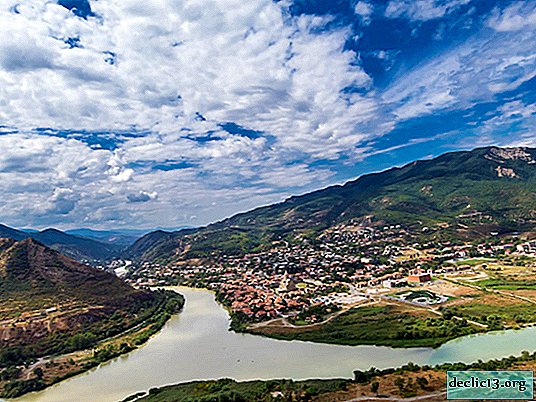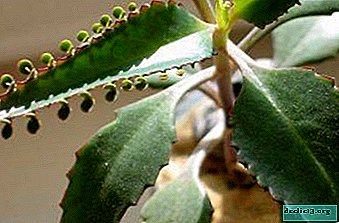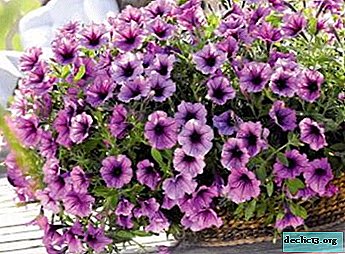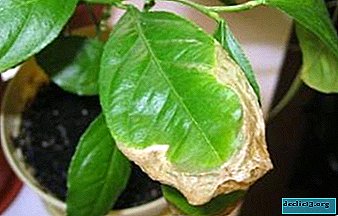How and how to water a radish to grow faster?
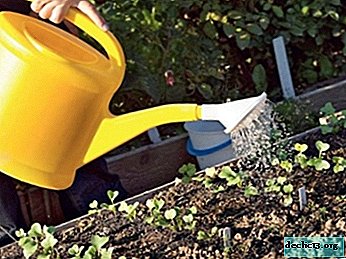
Radish is a very popular garden culture in our country and attracts with the following advantages: the crop can be harvested in spring, the fruits are unpretentious, rich in vitamins (B, C, PP), minerals (potassium, fluorine, phosphorus, magnesium), it has a sharp taste, you can grow even on the balcony and windowsill.
To get a good harvest, it is important not only to choose the right seeds, prepare the soil, but also to follow the rules of irrigation. This article describes how to choose a watering can, what should be the water and how to feed the culture for faster growth.
The importance of proper and timely watering of radishes
Proper and regular watering is important for any garden crop, including radish. If you moisten the soil with the crop incorrectly, you can get fruits with a bitter aftertaste and coarse fibers.
- Lack of moisture leads to the formation of flower arrows.
- Excess moisture - to dry, empty fruits and cracks in them.
Watering can selection
 The most popular garden watering cans are metal and plastic:
The most popular garden watering cans are metal and plastic:
- Metal lakeand durable, but weigh about a kilogram - wearing them can be uncomfortable and hard. But copper and zinc, of which the watering can is made, destroy the spores of the fungus.
- Plastic watering can weighs less than 500 g, does not leak, as it has no seams.
Protect the plastic watering can from direct sunlight and frost, otherwise it may be deformed.
The optimal volume of the watering can is 8-10 liters: with such a burden you will get tired less. A watering can with divisions will be convenient, in which you can mix formulations for feeding and plant nutrition.
In addition to the watering can, purchase the necessary nozzles, preferably with removable sieves - they are easier to wash.To water the crop, you need a small diffused stream, so it is better to use a watering can with a small nozzle. In other cases, there is a risk that the soil will be washed out and the root crops will lose their shape or be damaged. The diameter of the nozzle holes should be between 0.8 and 1.5 mm. Securely fix the nozzles so that they do not fall and do not inadvertently damage the plants.
Water requirements
Water should be clean and warm. In the heat it is better to use cool, but not cold water. You can water it with plain water as well as infusion from herbs, a solution of ash. It is best to combine watering, top dressing and pest prevention.
How to feed, so that the culture grows faster?
When preparing the soil for winter, feed it. Great for:
- humus - half a bucket;
- potassium salt - 15 g;
- superphosphate - 50 g per 1 square. m. of soil.
 Before spring planting, add the following fertilizers:
Before spring planting, add the following fertilizers:
- humus or compost - 5 kg;
- wood ash - 1 tbsp .;
- double superphosphate - 40 g per 1 square. m
Analyze the condition of the plants during growth:
- About a surplus of nitrogen they say small fruits and a large number of leaves. Phosphorus and potassium will help. Dilute in 10 l of water 40 g of superphosphate and 15 g of potassium sulfate or 1 cup of sifted ash and tobacco dust. Pour the radish under the root.
- About nitrogen deficiency say dull leaves and small fruits. Dissolve 1 tsp in 10 l of water. urea. Pour seedlings with a solution of 1 time per season (3 liters per 1 sq. M.).
How often to carry out the procedure after planting?
For the first time, water abundantly planted radishes immediately after sowing. This rule must be observed both in the greenhouse and in the garden. Crops must be moistened with water at room temperature, even if you soaked the seeds in water or growth stimulants.
You can water radishes only in the mornings and evenings. Plants watered during the day can get burned, as moisture evaporates quickly under the sun.If there is no way to water the radish in the coming days, you need to lay a layer of mulch on the seedlings (cut grass, hay, straw, leaves) - it will delay the evaporation of moisture.
The last time radishes need to be watered is about 5 hours before harvesting. In this case, you will get juicy and tasty fruits that will be stored longer.
Step-by-step instruction
At home
Water the seedlings regularly and moderately with room temperature water. Loosen the soil after watering. Sowing requires loose soil, rich in nutrients, with a neutral reaction, acidic soil can cause a fungal disease in the radish - keel. There is no need to additionally feed, as the radish is unpretentious and grows rapidly.
In the open ground
On warm, but not hot days, water the culture every 2-4 days. On hot days of summer, you need to water every day with cool or warm water.
Especially often, radishes are watered in a period of drought: twice a day, both in the early morning and late evening.In cool weather, limit yourself to one watering in 3-5 days.
In the greenhouse
 The procedure for irrigation in a greenhouse is almost the same as in open ground. However, if vegetables are grown in greenhouse cassettes, it is better to moisten the earth with the help of flooding.
The procedure for irrigation in a greenhouse is almost the same as in open ground. However, if vegetables are grown in greenhouse cassettes, it is better to moisten the earth with the help of flooding.
During the appearance of leaves, the soil should be moistened by 70%, with the formation of root crops - by 70-75%. We must not forget about ventilation, airing the greenhouse immediately after watering. If you neglect this rule, the soil will bloom and will be infected with fungi.
Do not forget to water the plants 5-7 hours before harvesting root crops, thanks to this they will last longer.
If you follow all the rules for growing radishes: timely water the plant, weed the soil and add fertilizers, tasty and healthy fruits can be obtained in the spring.


